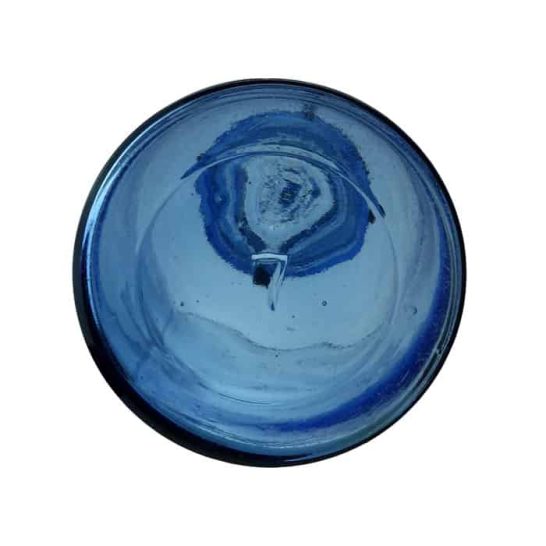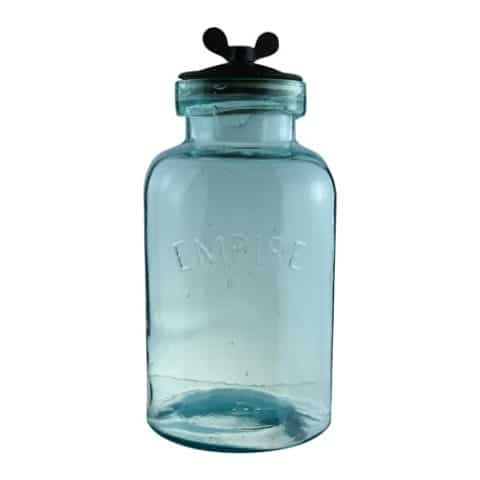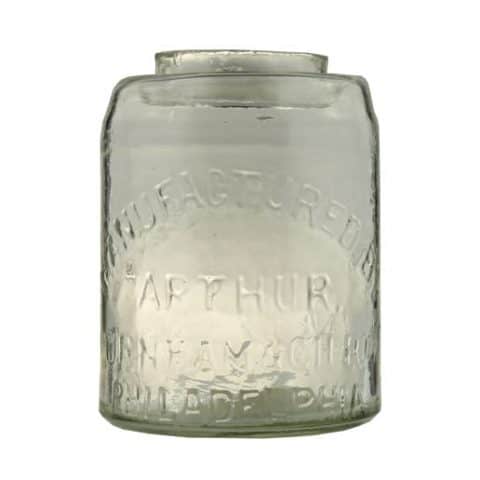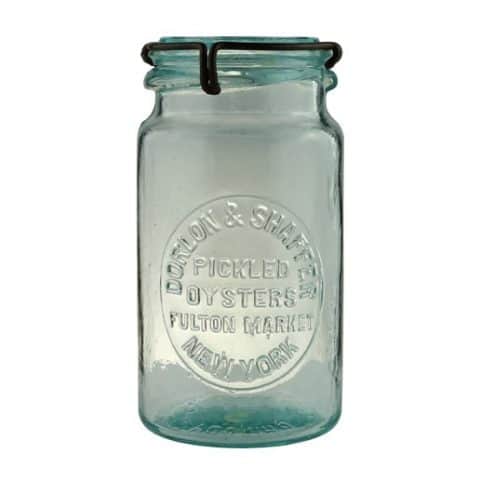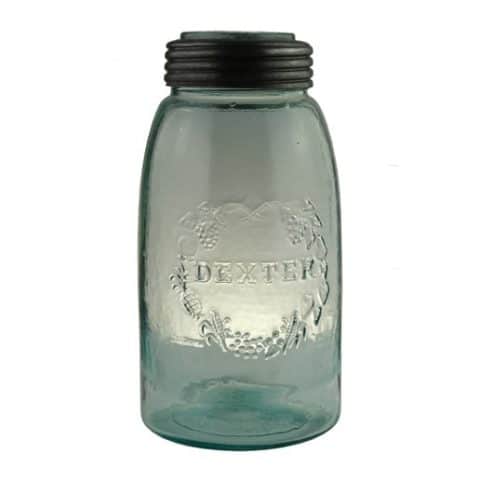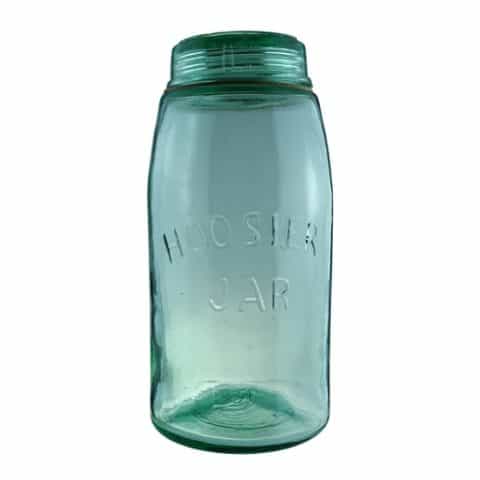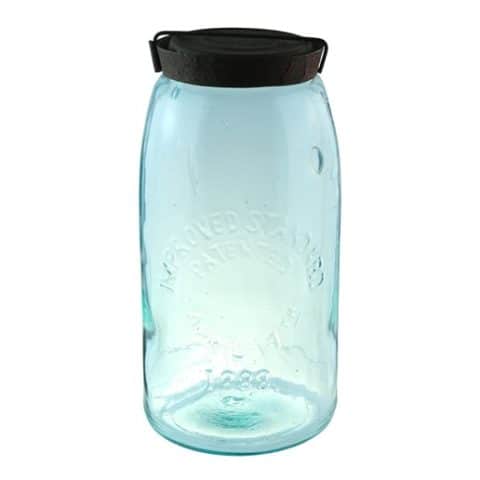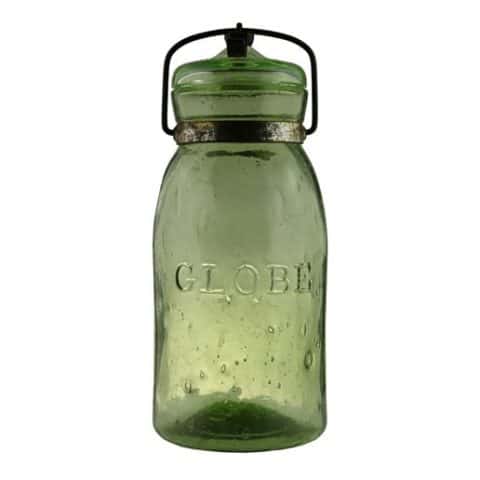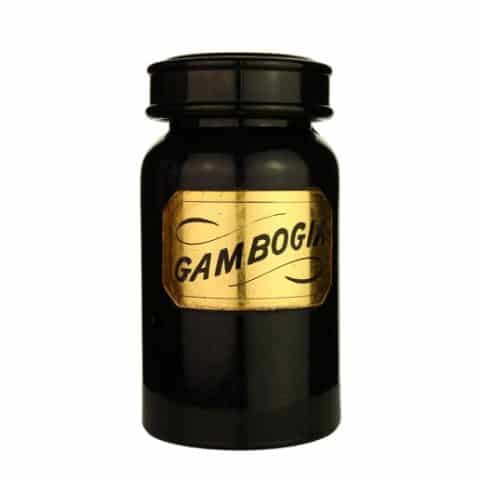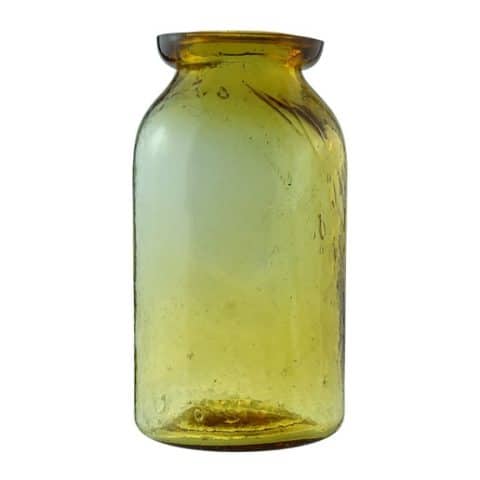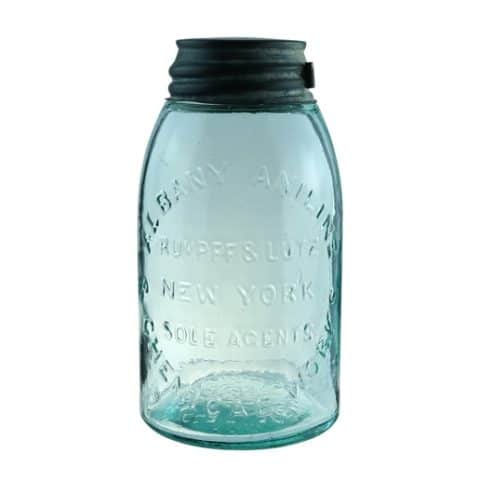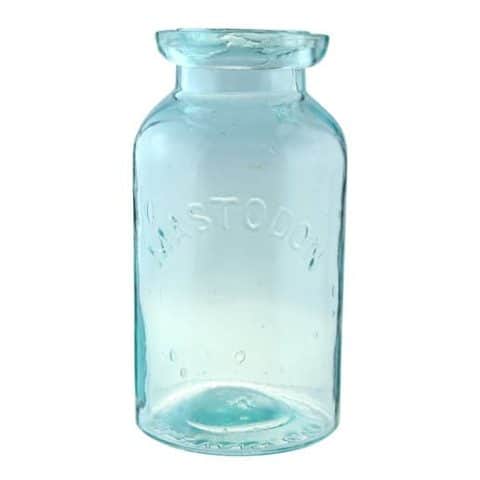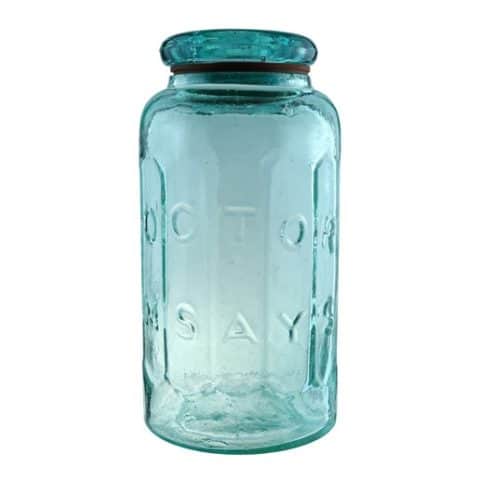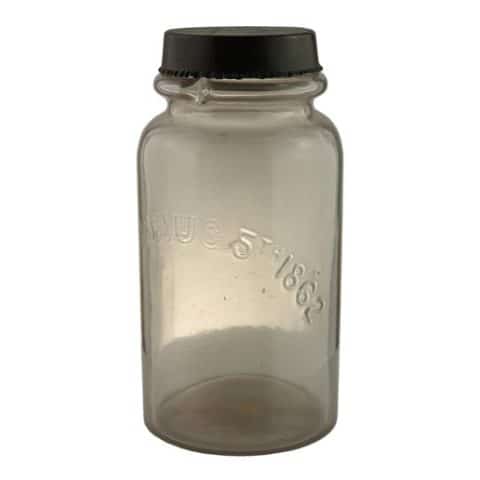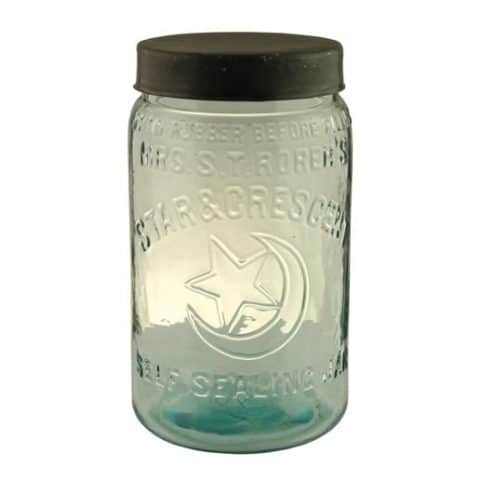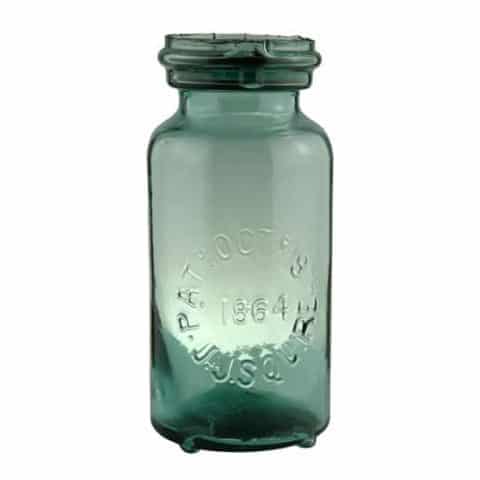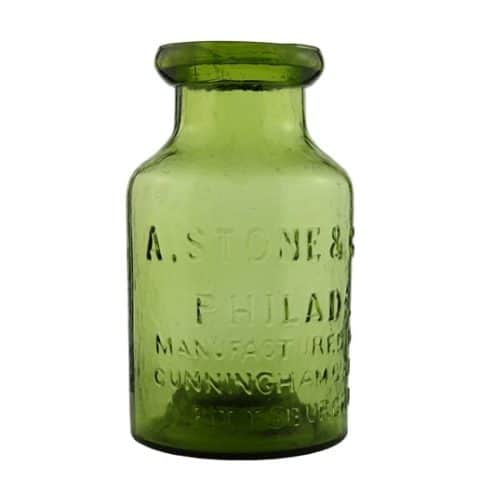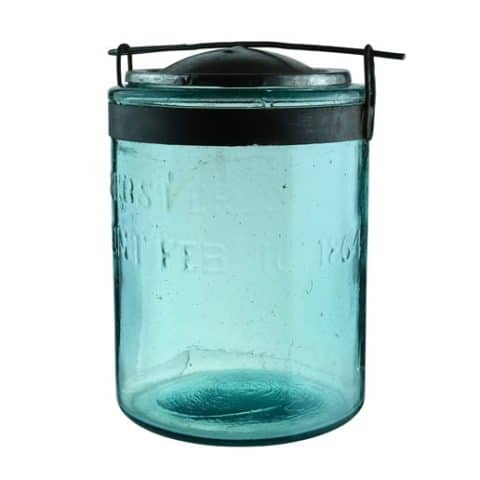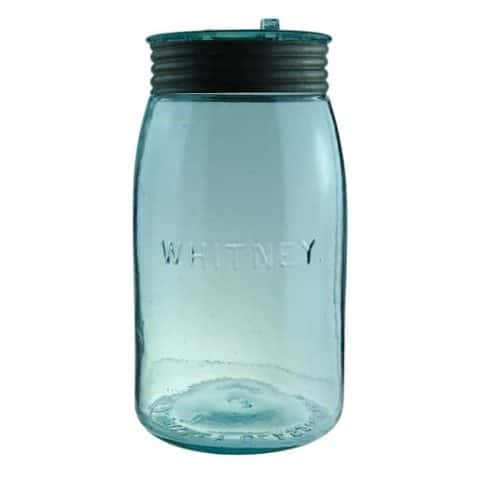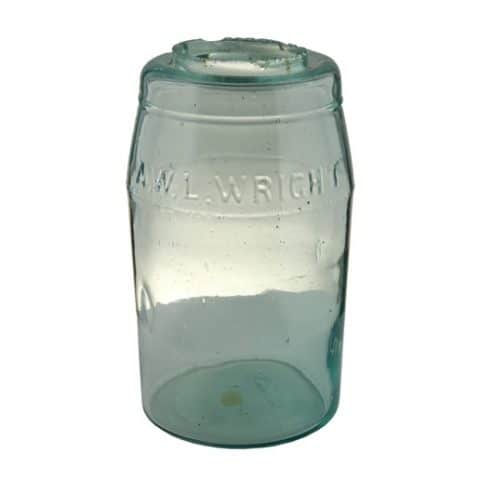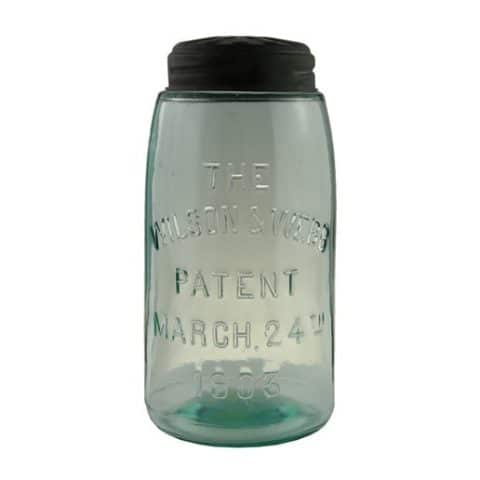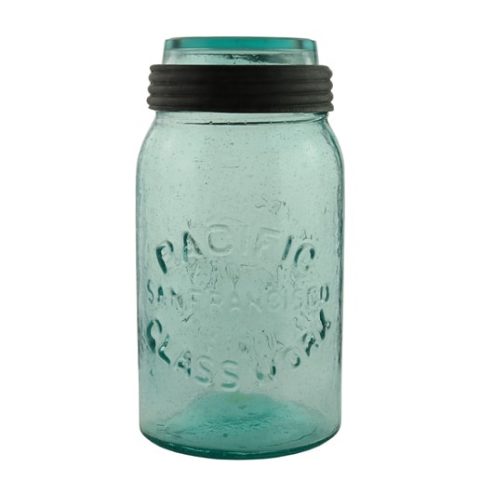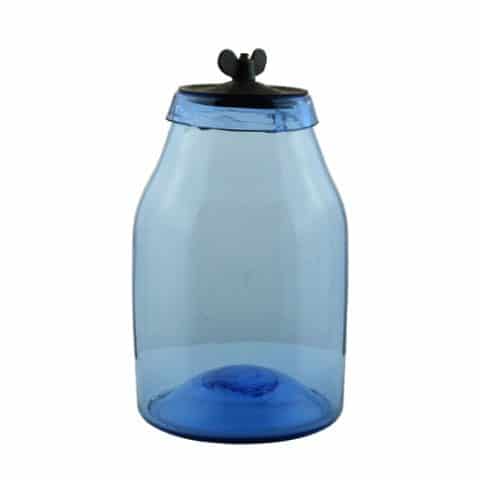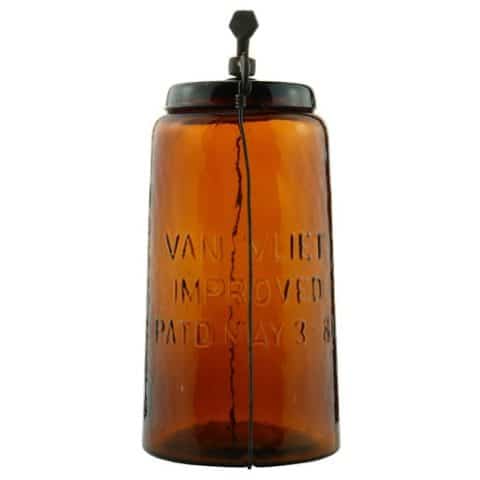Cohansey 7
Cohansey
Cohansey Glass Manufacturing Company
Philadelphia, Pennsylvania & Bridgeton, New Jersey
Cornflower Blue Half Gallon
Provenance: Phil Smith Collection

Our half-gallon cornflower blue Cohansey fruit jar is hand blown with the ground lip. The face of the jar is embossed with an open-spaced sans serif typestyle reading ‘COHANSEY’ in an arch. The bottom of the jar has an embossed number ‘7.’ The jars were made circa 1875 by the Cohansey Glass Manufacturing Company of Philadelphia, Pennsylvania, and Bridgeton, New Jersey. The jar is considered extremely rare in this glass color and size.

There are various closures recorded for the jar. One is a top seal, straddle-lipped, tinned iron lid with an attached wire clamp engaging inclined ramps on the neck of the jar. The second is a top seal, straddle lip glass lid with a wire clamp with two hooks engaging inclined ramps on the neck of the jar. The third is a top seal, straddle lip glass lid and wire clamp with two long hooks and two short hooks. The two long hooks engage inclined ramps on the neck of the jar. The two short hooks consist of ends held together by a strip of bent sheet metal that holds the wire ring around the glass lid in place.
The glass lids are stamped three different ways, mostly with the “Cohansey Glass Mfg. Co.” or similar on the top with patent information and dates. The patentees were Joseph Borden of Bridgeton, New Jersey, in 1867. Charles G. and Williams Imlay of Philadelphia, Pennsylvania in 1872, and Thomas Hipwell of Bridgeton, New Jersey, in 1876. The jars can be found in aqua and clear quarter pints, half pints, three-quarter pints, half gallons, and two-and-one-half gallons. The extremely rare ones are the blue half-gallon like our museum example, and the aqua and amber two-and-one-half gallon jars. We have also included a rare citron quart in the museum display.
Cohansey Glass Manufacturing Company
The roots of the Cohansey glass works spanned many years and started in southern New Jersey. The first recorded European settlement in what is now Bridgeton was made around 1686 when Richard Hancock established a sawmill. Settlers established a pioneer ironworks in 1814. Bridgeton was incorporated as a township by an act of the New Jersey Legislature on March 3, 1845, from portions of Deerfield Township. Bridgeton city was incorporated on March 1, 1865, replacing both Bridgeton Township and Cohansey Township. The city was named for its location adjacent to a bridge on the Cohansey River and is said to be a corruption of “bridge town.”
The Free Will Glass Works began operations in Camden County, New Jersey, in 1835. William Nicholson was the main organizer bringing several members of the community together. Others included Richard H. Tice, Jacob DeHart, Joseph H. Thomus, Thomas B. Park, Richard Fordham, Israel Evan, Isaiah Dill, Matthias S. Simmerman, John T. Brown, John E. Ayars, Samuel P. Tice, and Joshua Eldridge. Flasks were the principal product ranging from a half dram to two gallons. William Nicholson bought the plant at auction in 1836. For the next twenty-seven or so years, the company went through several owners and name changes until 1863, when the Bodine concern acquired the plant after operating as (Joel) Bodine & Sons since 1846. The business prospered under the proprietorship of F. & J. Bodine. The earliest date that the Bodine’s used the name Cohansey was February 12, 1867. Nixon J. Bodine incorporated Cohansey Glass Manufacturing Company in 1870 along with Francis L. Bodine, David P. Elmer, John T. Nixon, and William G. Milliken. The glassworks was located at Pearl Street on the edge of the Cohansey River. The West Jersey Railroad extension ran directly through the factory yard. This connected the company to their customers and the rest of the growing country.
See the museum example of a Potter & Bodine’s Air Tight Fruit Jar made by the Cohansey Glass Manufacturing Company.
The company was now running four factory plants. Two plants were for fruit jars and bottles, and the other two plants were for their window glass. The factory made druggist bottles, vials, beer bottles, wine bottles, fruit jars, carboys, demijohns, and window glass. The specialty of the company was the Cohansey Fruit Jar which the owners had a special patent. At one time, the company employed over 400 people.

The 1875 advertisement above reads, “New Cohansey Fruit Jars. Glass Lid and Screw Clamp in One Piece. Glass Cover in one piece. Anti-Rust Lined Metal Top. The Latest Improvement in Fruit Jars. Glass only in Contact with Fruit. No Separate Pieces to be Mislaid when wanted. No wrench required to Open or Close. Elastic Pressure by Spring Clamps on Shoulder Joint. The clamp can be turned back and prove the air-tight joint perfect. Every jar being inspected, there is no trouble in using. Inquire of nearest wholesale dealer, or write for samples and prices. Our Protector Jars, with-anti rust-lined metal tops long and favorably known, have the same principles and advantages and are cheaper in price. Cohansey Glass Manuf’g Co., manuf. Window Glass, Bottles and Fruit Jars, N.W. cor. Third and Arch Sts., Philada.
See the museum example of a Patent Protector Fruit Jar made by the Cohansey Glass Manufacturing Company.
The American Window Glass Company bought Cohansey Bridgeton in 1899 with a strike occurring in 1900. American was a consolidation of at least 40 glass companies. The factory closed in 1917.
See the museum example of a Thomas J. Myer & Co. oyster jar made circa 1875 by the Cohansey Glass Manufacturing Company.

Primary Image: Half-gallon cornflower blue Cohansey fruit jar imaged on location by Alan DeMaison, FOHBC Virtual Museum Midwest Studio.
Support Secondary Images: From the Jeff Vanaman collection, including citron green quart Cohansey and long group of different size Cohansey jars.
Support Image: Three aqua jars. Pook & Pook, Inc., Auctioneers and Appraisers.
Support: Reference to Fruit Jar Annual 2020 – The Guide to Collecting Fruit Jars by Jerome J. McCann
Support: Reference to Red Book No. 12, the Collector’s Guide to Old Fruit Jars by Douglas M. Leybourne, Jr.
Join the FOHBC: The Virtual Museum is a project of the Federation of Historical Bottle Collectors (FOHBC). To become a member.

